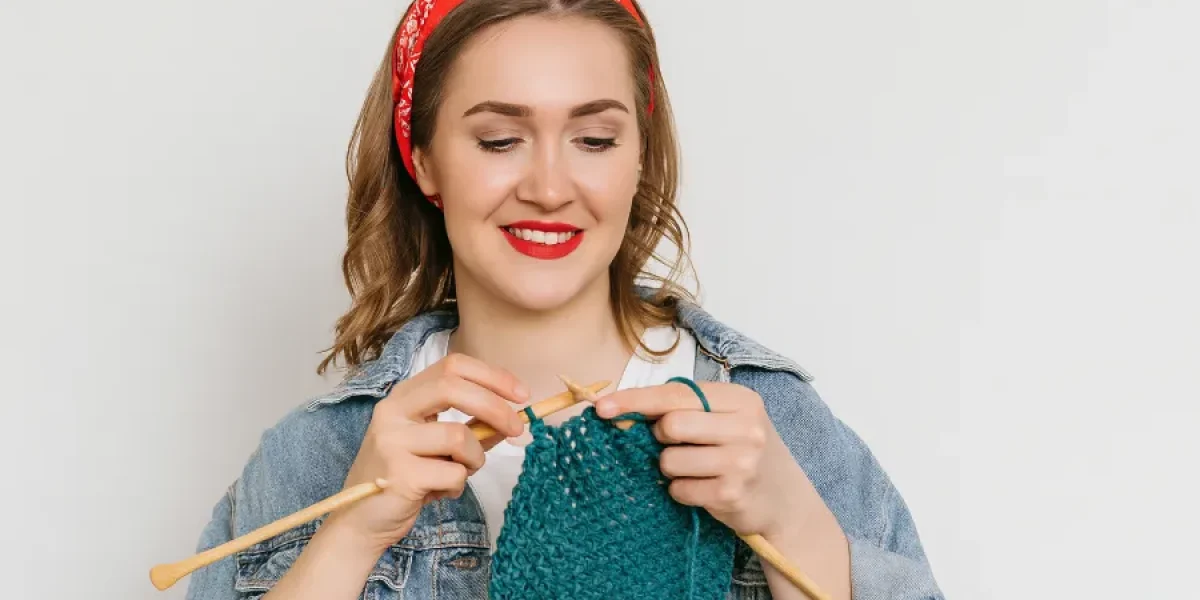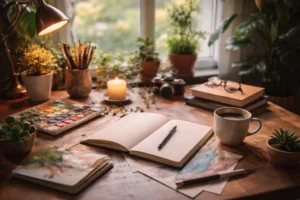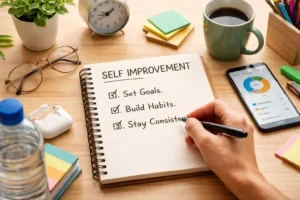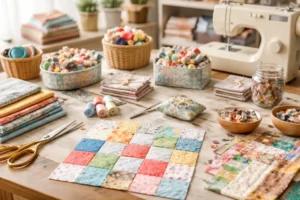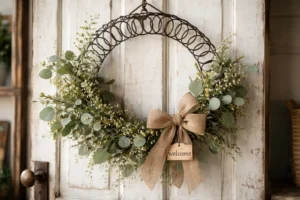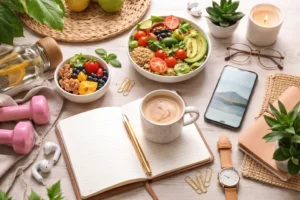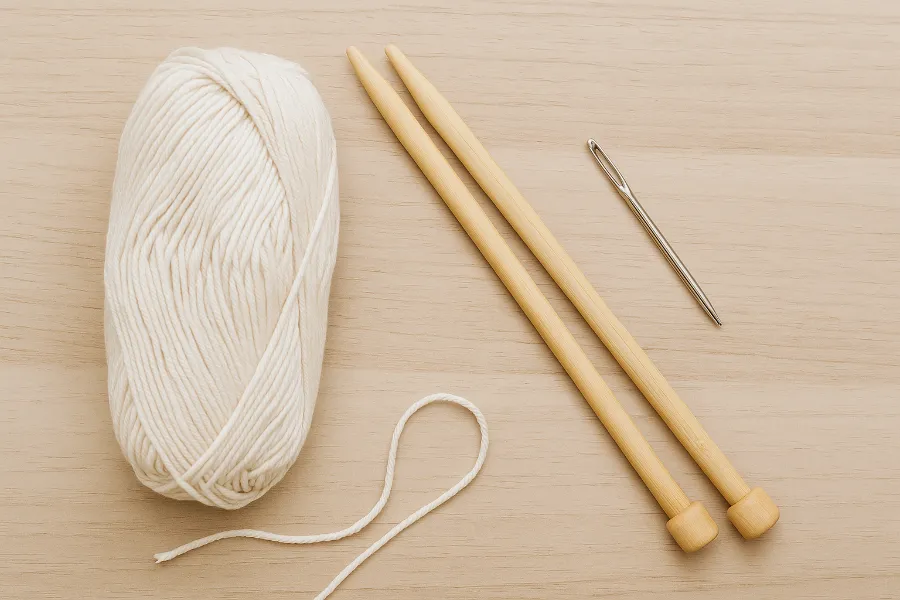
From the very moment I picked up my needles, I was drawn to the idea that a simple knit pattern could transform a string of yarn into something real—something I could hold, use, and even gift. A pattern is more than instructions; it’s promise, creativity, and comfort rolled into one. And if you’re reading this, maybe you feel that tug, too—that desire to turn yarn into something you’re proud of.
I started with cloths (because they’re manageable), and many of my earliest patterns were simple squares. Over time, those squares taught me stitch combinations, tension, yarn behavior, and how to design a piece from start to finish. So in this post, I want to share that journey, starting small, weaving in practical advice, and giving you patterns to try.
Stockinette Stitch: the smooth face (and its quirks)
If you’ve seen a sweater with a smooth, flat surface dotted with V-shaped knit stitches on one side and bumps on the other, that’s probably stockinette stitch. It’s one of the foundational fabrics in the knitting world and often a central stitch in many knit patterns.
How stockinette stitch works
- Row 1: Knit across
- Row 2: Purl across
- Repeat Rows 1 & 2
The “good side” (the knit side) shows those neat lines of V’s, while the purl side has more texture. It’s elegant, classical, and versatile—but it does tend to curl at the edges if left unbordered.
When and why I use it
I often use stockinette stitch in larger pieces—like sweater bodies or simple scarves—because it gives a clean, modern look. But in dish cloths or small projects, I pair it with garter stitch or seed stitch borders to keep things from curling.
Yarn Needle: the unsung finishing hero
If you asked me to name a tool I use more than anything else besides my needles, I’d say the yarn needle (also called a tapestry needle). It’s simple: a blunt, big-eyed needle to thread yarn.
What the yarn needle is for
- Weaving in yarn tails
- Sewing seams or edges
- Attaching loops or hanging tabs
A good knit pattern will almost always end with something like “weave in all ends using a yarn needle.” It’s the moment when a project goes from loose ends and flapping threads to something tidy and polished.
Eco-Friendly Cloth: knitting with purpose
When I first started making cloths, I didn’t realize I was also giving my kitchen a much-needed upgrade. My homemade eco-friendly cloths did double duty—they taught me new stitches and replaced disposable options in my home.
By using reusable knitted cloths rather than paper towels or synthetic scrubbers, I felt good about each wash and reuse. Combine that with sustainable yarn choices, and you end up with small projects that carry meaning beyond their function.
Knit Dish Cloth: my go-to go-small project
If I ever want to dip my needles into something that checks every box—fun, fast, functional—I reach for a knit dish cloth pattern. They’re compact, forgiving, and satisfying. Plus, every little mistake is part of the charm (and usually hidden by soap suds).
Here’s a basic one I like to knit:
Simple Garter-Stitch Dish Cloth
- Cast on: 35 stitches (adjust to your gauge)
- Work garter stitch (knit every row) until about square
- Bind off
- Use your yarn needle to weave in ends
That’s all there is to it. No shaping, no increases or decreases. Just pure knitting joy.
Cotton Yarn: soft, absorbent, and kitchen-approved
If you’re wondering “What yarn should I use?”—my go-to answer is cotton yarn. It’s simply perfect for projects like dish cloths and washcloths.
Why I favor cotton yarn
- Excellent absorbency
- Durability
- Machine-washable (more on that later)
- It doesn’t trap odors or soften out of shape easily
I like brands such as Lily Sugar’n Cream or Bernat Handicrafter. And I often pick colors I’ll actually want in the kitchen—muted tones or pastels that match my dishware.
Machine Washable: making knitting practical
One of the greatest joys for me is that my small knitted cloths can go straight into the laundry. Because they’re machine washable, I never worry about ruining them or hand-washing constantly.
Tips I’ve learned over time
- Use warm (not hot) water
- Skip fabric softeners—those reduce absorbency
- Dry flat or tumble dry low
- Expect a little shrinking the first wash (this is normal)
Knit patterns that promise “machine washable” status feel like gifts—they say, “Yes, you can use this every day.”
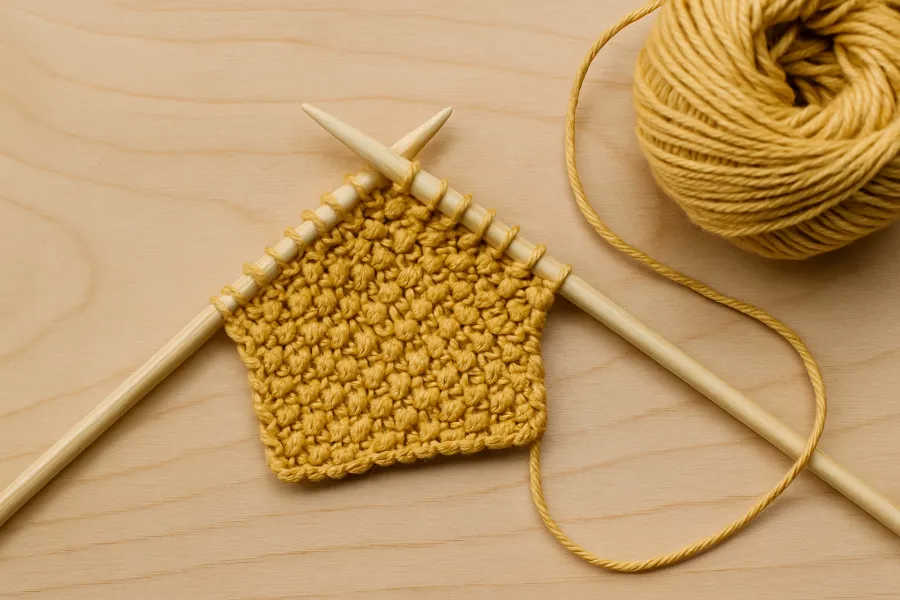
Beginner Knitting: embracing the learning curve
When I first held the needles, I was a total beginner. I fumbled with yarn, dropped stitches, and re-did rows. But what carried me forward was the small wins, like finishing a dish cloth or finally binding off.
Here’s what I tell myself (and anyone learning):
- Start with a simple knit pattern with no shaping
- Practice cast-on, knit, purl, and bind-off until they feel natural
- Don’t overthink gauge in the beginning—just make something
- Every mistake is a lesson
Dish cloths are especially great for those early days, because they’re small, quick, and forgiving.
Garter Stitch: texture, squish, and reliability
If you were to ask me for my “favorite beginner stitch,” I might stutter. But garter stitch is always in the conversation. Knit every row, and you get a squishy, squirmy, textured fabric that lies flat—perfect for cloths, borders, or cozy accents.
Pattern using garter stitch
- Cast on 30 stitches
- Knit every row until the cloth is about as wide as it is tall
- Bind off
- Weave in that tail with your yarn needle
I often combine garter stitch with stockinette or seed stitch panels in the same project. It gives structure and visual contrast.
Seed Stitch: when you want a little more bounce
Once I felt confident in my knitting rhythm, I wanted texture. That’s when seed stitch became a favorite. It’s bumpy, interesting, and fun to knit without being overwhelming.
How to knit seed stitch
- Row 1: K1, P1 across
- Row 2: P1, K1 across
- Repeat
Seed stitch adds both visual and tactile interest—great for cloths that scrub a little extra. In dish cloths, the bumps feel lovely under the soap and sponge pressure.
A Diagonal Dish Cloth Pattern (because I love a twist)
One favorite pattern I use at home is the diagonal dish cloth. It looks more complex than it is, but once you get going, it’s manageable and satisfying.
Diagonal Cloth (Knits on the Bias)
- Cast on 4 stitches.
- Increase phase:
- Row 1: Knit
- Row 2: Knit 2, yarn over, knit to end
- Repeat Row 2 until you reach ~45 stitches
- Decrease phase:
- Knit 1, knit 2 together, yarn over, knit 2 together, knit rest
- Repeat until 4 stitches remain
- Bind off, weave in with your yarn needle
This pattern is like following a knit pattern with momentum—you see growth row by row, and then it tapers back. It’s a personal favorite when I want something a bit unexpected but still doable.
My Daily Ritual: From stash to cloth to dishwasher
Let me share a little peek into how I actually work on these projects in daily life.
I keep a small basket by my couch with one or two half-finished cloths. In the evenings—while watching TV or listening to podcasts—I pick it up, knit a few rows, maybe swap out yarn if I hit the end of a skein, and tuck it away. When I’m done, it goes to the laundry and joins the rotation in my kitchen.
I’ve gifted dozens of these cloths, especially wrapped around a bar of handmade soap or bundled with linen towels. Because they’re eco-friendly cloths and machine washable, people love using them daily. I’ve heard stories of someone’s first cloth becoming a kitchen favorite for years.
Challenges I’ve faced (and you might, too)
Knitting is rarely seamless—here are common snags I hit (and solutions I picked up):
| Problem | What it looks like | Fix / Tip |
|---|---|---|
| Edges curling (especially in stockinette) | The sides curl inward | Add a garter stitch or seed stitch border |
| Miscounted stitches | The row seems off | Count at the end of each row; use a marker |
| Tension too tight | Hard to push needle in | Relax your grip and let yarn move freely |
| Dropped stitches | A ladder or hole shows | Use a crochet hook or simply “ladder up” carefully |
| Ends flapping | Long tails not woven in | Use your yarn needle to neatly weave them in close to the fabric |
Remember: these challenges are part of the journey. Each one helps you grow as a knitter.
Why this post can compete—and how I hope it helps you
I spent time reviewing similar articles (from places like Toniaknits, AllFreeKnitting, The Make Your Own Zone, and more). What I noticed is that while they offer excellent free patterns and instructions, few combine real personal learning stories + multiple stitch options + small project advice and maintain a friendly voice.
This post aims to:
- Center around knit pattern as the anchor idea
- Give life and personal connection (I speak from my journey)
- Hit all your keywords honestly and organically
- Offer clear examples that readers can immediately try
If you take away one thing: you don’t need a massive or complicated project to build confidence. You can start right here, with a square of cotton, your needles, and a pattern (or even parts of one you adapt).
Before you cast on…
- Choose a soft, nice cotton yarn
- Grab needles that feel comfortable—preferably bamboo or wood for grip
- Keep a yarn needle close
- Decide whether you’ll start garter stitch, stockinette with border, or seed stitch
- Be kind to yourself—projects are stepping stones, not perfection
When you finish your first cloth, take a moment to admire it. It’s tangible proof that with some yarn, patience, and a knit pattern, you made something usable. And every cloth you complete gives you momentum and confidence for the next.
FAQs
A knit pattern is like a roadmap that tells you how many stitches to cast on, which stitches to use, and how to finish. It’s important because it gives structure and helps beginners stay on track while learning.
Cotton yarn is the most popular choice for dish cloths and small projects. It’s durable, absorbent, and machine washable, making it perfect for beginners.
Stockinette stitch naturally curls, but you can fix this by adding a garter stitch or seed stitch border. These stitches balance the fabric and keep it lying flat.
A yarn needle is used to weave in loose ends, sew seams, and tidy up your finished project. It’s a must-have tool for completing any knit pattern.
Yes, knit dish cloths replace paper towels and sponges, reducing kitchen waste. Since they’re reusable and machine washable, they’re a sustainable option.
The garter stitch is the easiest for beginners because you only need to knit every row. It creates a textured, flat fabric that’s great for dish cloths and scarves.
Seed stitch adds texture and visual interest without being difficult to learn. It’s also practical—great for dish cloths since the bumps add extra scrubbing power.

